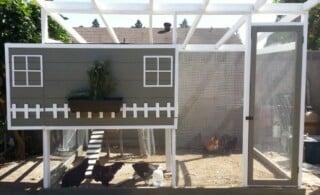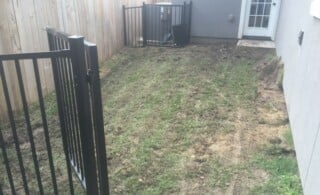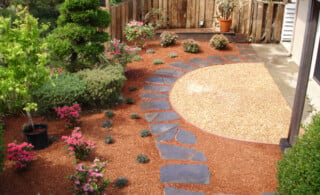
Fresh air and time on a swing set or playground can create memories for children that last a lifetime. However, injuries and trips to the hospital may make memories that are more bitter than sweet. Statistics show that about 200,000 children end up in the emergency room each year due to injuries that could be prevented. Knowing how to make a playground accident-proof and safe for play can make your child’s experience much better.
Adult Supervision Is a Must
The most important part of playground safety is adult supervision to ensure that children are playing safely. Most kids have a wild imagination and a desire to explore the playground beyond simple slides and swings. With an adult keeping an eye, it’ll be safer for the child, who may need someone to stop them before they do something dangerous. Additionally, adults are needed as a first responder in case a child does get injured.
Design Safety and the Playground
The way the playground is designed can also help to minimize the risk of injuries. Having a checklist to determine whether or not the play area is safe can assist parents in protecting their children.
- Make sure that the playground uses a safe ground covering to lessen the risk of broken bones if a child falls. Examples of good ground material include mulch, sand, pea gravel, and any rubber-like material.
- Ensure that the space around the play equipment extends six feet or more in all directions. Play structures that stand above 30 inches high need to be nine feet apart from each other.
- Swing sets should have two swings per bay, and swing set installation should include leaving more space between the swings and other playground equipment to prevent a child from being kicked by someone using the swings.
- For all ramps and elevated surfaces, make sure that there are guard rails in place to minimize the chance that a child could fall off.
- Keep an eye out for sharp edges or protruding bolts or screws on equipment to prevent cuts and scrapes.
- Keep landscape rocks and other types of stones out of reach to ensure that kids won’t be able to throw them at each other.
- There should be separate playgrounds for toddlers and older children so that each child is playing with age-appropriate equipment.
Maintenance and Upkeep Matter
Once you’ve completed a playset assembly project in your yard or playground construction in your neighborhood, you’ll need to be sure to keep on top of regular maintenance needs. Maintaining the playground can be as simple as picking up debris around the area and as meticulous as checking that all of the nuts and bolts are snugly in place. Another important aspect of maintenance is checking all of the equipment for wear and tear.
Educate Children on Safety and Rules
Knowing what safety tips to teach your children and setting ground rules is crucial for injury prevention. Make sure your children know how to use each piece of equipment properly, and set rules to make sure use it safely. For instance, once they know how to use the monkey bars, they need to know that they should take turns using them to prevent crowding and potential injuries.
Additional Resources
- Child Injuries Are Preventable: This is an article by the CDC that gives tips on how to prevent concussions that could occur on the playground. It also provides statistics on how many children are injured per year.
- Nonfatal Playground Brain Injuries: To emphasize the need for playground safety, this is a longevity study article that analyzes data on playground injuries over 12 years.
- Concussion Fact Sheet: Staying educated on the details of concussions and what to look out for is important for prevention, and this article gives everything you need to know.
- Preventing Monkey Bar Injuries: Here are a few tips on preventing injuries on the monkey bars.
- Preventing Playground Falls and Injuries: This is another article that gives tips on preventing injuries in a play space.
- Five Hidden Playground Dangers to Look Out For: Although you may know many safety tips, this article can fill in the gaps so you can be more efficient.
- Playground Safety for Kids: This article provides more tips on keeping children safe on the playground.
- Top Five Playground Surface Materials: Learn about examples of the best kinds of safe surfaces for play areas here.
- Is Your Child’s Sandbox Safe?: Read playground safety tips that are specific to the sandbox and find out how to keep it clean and free from hazardous materials.
- Playground Surfaces: Here is another article providing information on types of playground surfaces, including a list of pros and cons for each one.
- Pushing Kids Too High on the Swings: Look at playground safety from a different angle. This article talks about the dangers of pushing your kids too high on the swings and what types of injuries that could cause.
- How to Treat Common Injuries on the Playground: Here are ten tips for treating and responding to injuries on the playground.
- Treating Skin Wounds in Children: If a playground injury is a cut or scrape, you’ll need to know how to treat that kind of injury. Read first aid tips to make sure your child’s wounds are taken care of.
- Swing Set Maintenance Reminders: This article provides everything you need to know about maintaining your swing set to prevent a dangerous accident.
- Putting a Stop to Rough Play: Here is an article that provides tips from a doctor on how to handle rough play between children.
 Raising Chickens at Home
Raising Chickens at Home  Spring Garden Flower Tips and Suggestions
Spring Garden Flower Tips and Suggestions  Plan Ahead for a Better Yard
Plan Ahead for a Better Yard  Dry Well Cleaning & Maintenance Tips
Dry Well Cleaning & Maintenance Tips  Backyard Tree Identification Guide
Backyard Tree Identification Guide 

Are You Familiar With This Topic? Share Your Experience.